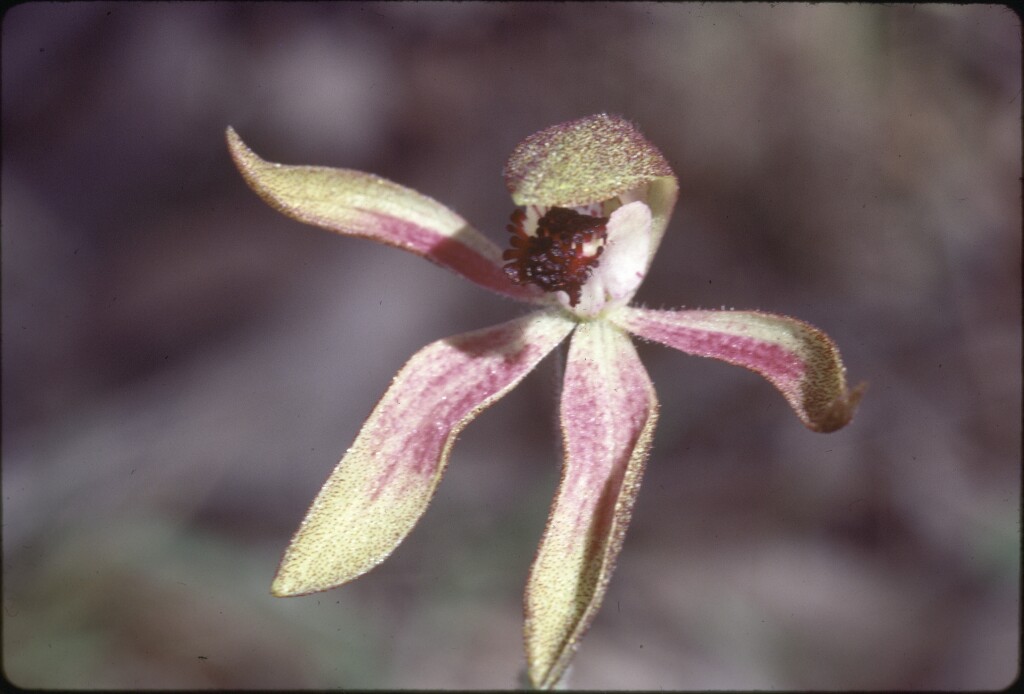Caladenia iridescens
R.S.Rogers Bronze CaladeniaFlowering plant slender, 10–25 cm tall, usually purplish. Leaf linear, 5–10 cm long, 1–2 mm wide. Flowers 1 or 2, dusky red or purplish to greenish brown, often with iridescent golden tints; ovary c. 5–7 mm long; perianth segments 11–15 mm long, 2–3.5 mm wide, acute, thickish, both sides with scattered glands; dorsal sepal linear-obovate, more or less hooded, curved at about the middle, embracing the column; lateral sepals and petals spreading or curved upwards, narrow-elliptic to narrow-lanceolate, asymmetric, lateral sepals broader than petals, divergent to crossed. Labellum on short claw, 3-lobed, 5–6 mm long, whitish, with red or purple transverse bars; lateral lobes with wedge-shaped anterior corner, basal margins entire, distal margin sometimes with a few long blunt teeth or clubbed calli; mid-lobe triangular, recurved, glandular, dark purple, fringed with stalked, granular-headed, purple calli becoming sessile towards apex; lamina calli in 4 crowded rows, extending from base to apex, becoming sessile near apex, heads purple and granular. Column incurved, narrowly winged at base, expanded above, with red or purple markings; anther with short point. Flowers Oct.–Nov.
Wim, GleP, VVP, GipP, OtP, WaP, Gold, CVU, GGr, DunT, OtR. Also NSW, Tas. New Zealand. Endemic to Victoria where possibly confined to the Grampians in heathy woodland and shrubby forest on well-drained sandy and gravelly soils.
Distinguished from Caladenia transitoria by its larger, more colourful flowers.
Reports of this species from the Otway Ranges need to be confirmed.
Entwisle, T.J. (1994). Orchidaceae. In: Walsh, N.G.; Entwisle, T.J., Flora of Victoria Vol. 2, Ferns and Allied Plants, Conifers and Monocotyledons, pp. 740–901. Inkata Press, Melbourne.
 Spinning
Spinning


